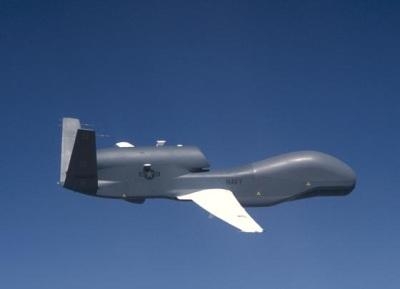Mon, Jan 13, 2014
Supported Operations Following Typhoon Haiyan
The inherent intelligence, surveillance and reconnaissance (ISR) capabilities of the Global Hawk Block 30 Unmanned Aerial System were used to support massive international humanitarian assistance and relief efforts following Typhoon Haiyan in the Philippines. Manufacturer Northrop Gurmman says that, due to Global Hawk's long endurance, persistence and range, the aircraft was "the only high altitude asset able to support relief efforts in this critical region of the world on a moment's notice. Global Hawk is also the only high altitude unmanned system able to carry radar, electro-optical (EO) and infrared sensors simultaneously."

On Nov. 14, Global Hawk flew its first of three critical sorties from Guam to the Philippines. It collected 282 wide-area images of the typhoon- ravaged area before returning to Andersen Air Force Base. Rapidly collected EO imagery was quickly relayed to U.S. and Philippine authorities to assist with infrastructure and damage assessments. Imagery also aided in logistical assessments of roads, airports and fields to help relief teams swiftly reach displaced survivors. On Nov. 16 and 20, the U.S. Air Force added the second and third sorties to support relief efforts.
In total, Global Hawk collected approximately 1,000 planned images and a number of ad hoc collections on each sortie. Global Hawk's system flexibility allows for ad hoc retasking to obtain specific pertinent imagery and data. "Mission planning in a crisis is hard, but having the ability to task and retask Global Hawk gives commanders the flexibility to conduct productive ISR missions that feed near real-time information to the response teams who need it the most," said Jim Culmo, Northrop Grumman's vice president, High Altitude Long Endurance Enterprise, Northrop Grumman.
When disaster strikes, understanding the magnitude of destruction left in the wake of the event is critical. NGC says Global Hawk's EO imagery covers large regions with high-resolution detail in support of vital life-saving operations.
Global Hawk's first humanitarian mission took place in 2007, as Southern California fought major fires. In 2010, Global Hawk supported international requests for surveillance following the Haiti earthquake. Similarly, the Global Hawk collected data and imagery within the dangerous radiation zones over the Fukushima power plant following Japan's 2011 earthquake and tsunami disaster.
(Global Hawk image from file)
More News
Circle To Runway (Runway Number) Used by ATC to inform the pilot that he/she must circle to land because the runway in use is other than the runway aligned with the instrument appr>[...]
Aero Linx: National Aviation Safety Foundation (NASF) The National Aviation Safety Foundation is a support group whose objective is to enhance aviation safety through educational p>[...]
At Altitude Of About 250-300 Ft Agl, The Airplane Experienced A Total Loss Of Engine Power On November 6, 2024, at 1600 central standard time, a De Havilland DHC-1, N420TD, was inv>[...]
From 2009 (YouTube Edition): Three Hour Flight Was 'Flawless' -- At Least, Until Mother Nature Intervened For anyone who loves the aviation business, this was a VERY good day. Afte>[...]
Also: AMA Names Tyler Dobbs, More Falcon 9 Ops, Firefly Launch Unsuccessful, Autonomous F-16s The Air Force has begun ground testing a future uncrewed jet design in a milestone tow>[...]
 ANN's Daily Aero-Term (05.05.25): Circle To Runway (Runway Number)
ANN's Daily Aero-Term (05.05.25): Circle To Runway (Runway Number) ANN's Daily Aero-Linx (05.05.25)
ANN's Daily Aero-Linx (05.05.25) NTSB Prelim: De Havilland DHC-1
NTSB Prelim: De Havilland DHC-1 Classic Aero-TV: The Boeing Dreamliner -- Historic First Flight Coverage
Classic Aero-TV: The Boeing Dreamliner -- Historic First Flight Coverage Airborne-NextGen 05.06.25: AF Uncrewed Fighters, Drones v Planes, Joby Crew Test
Airborne-NextGen 05.06.25: AF Uncrewed Fighters, Drones v Planes, Joby Crew Test



